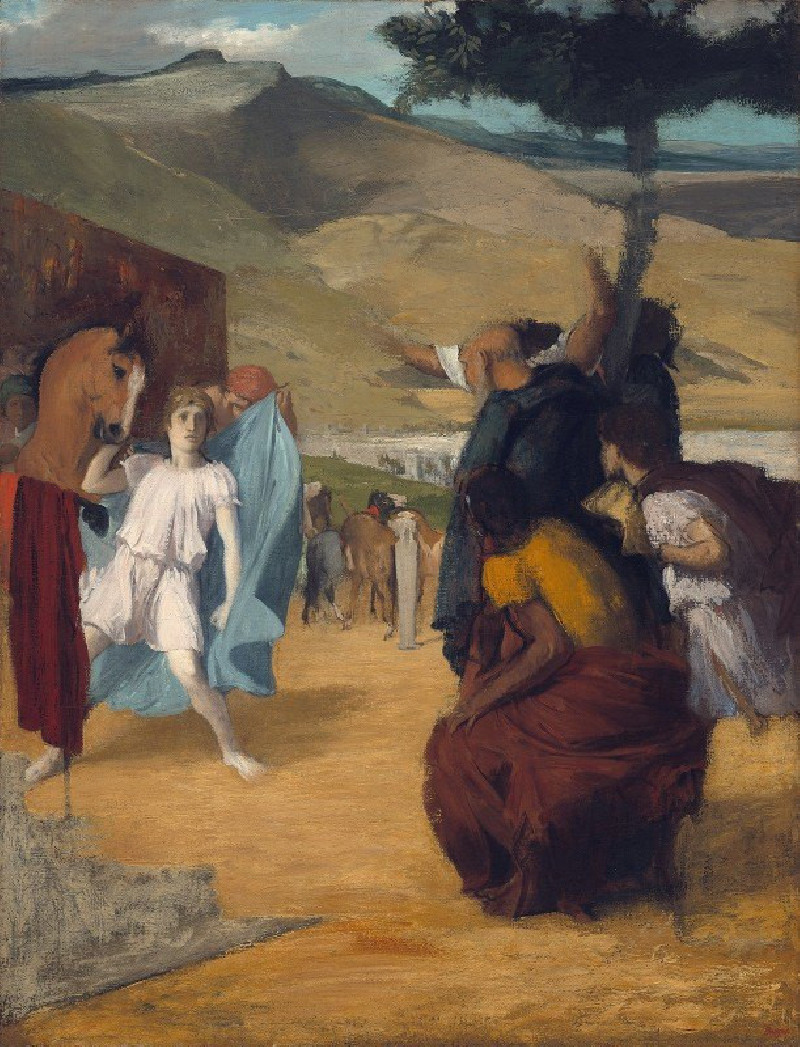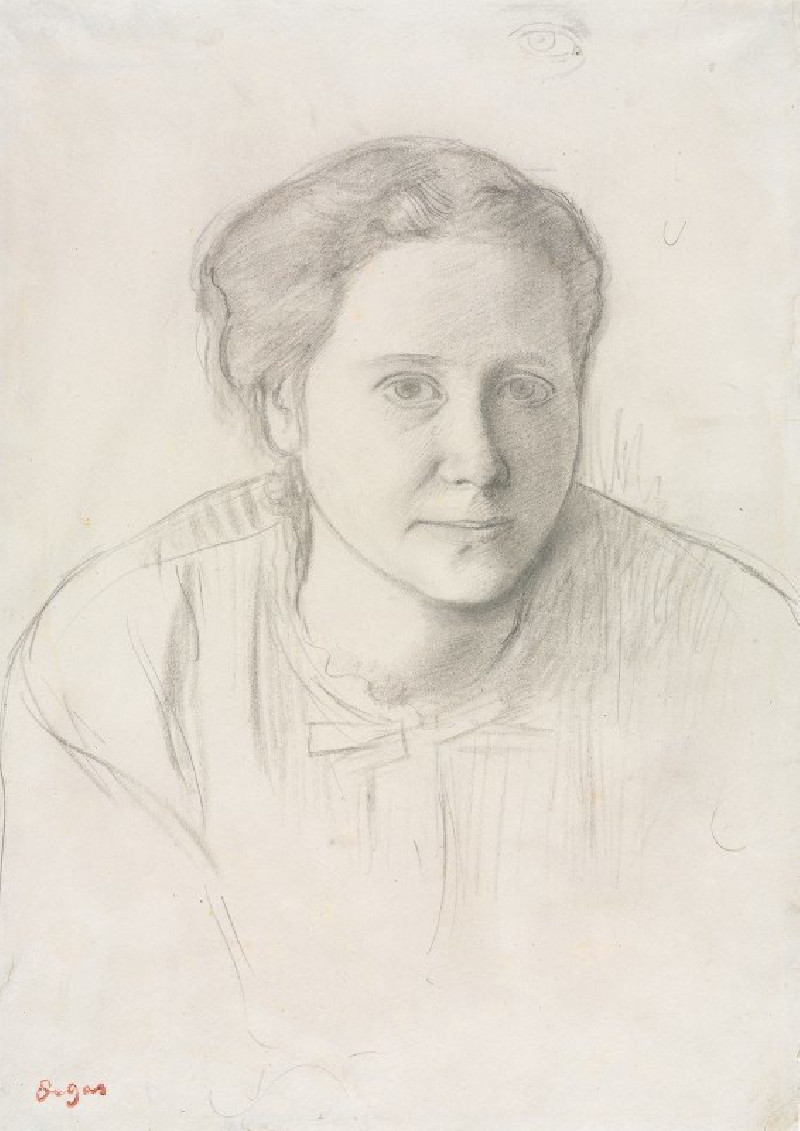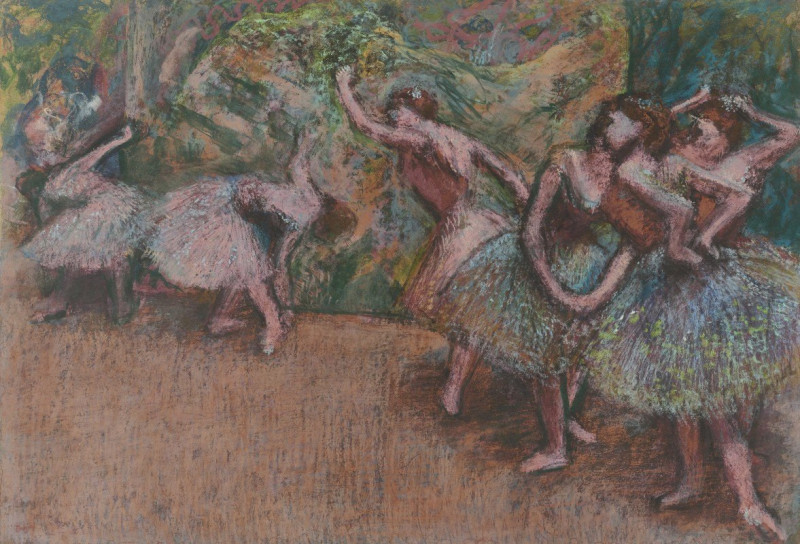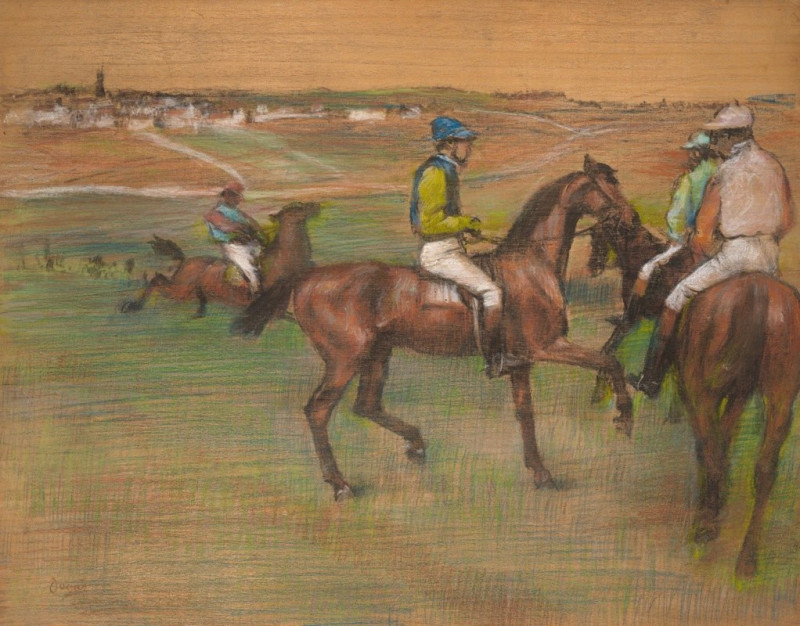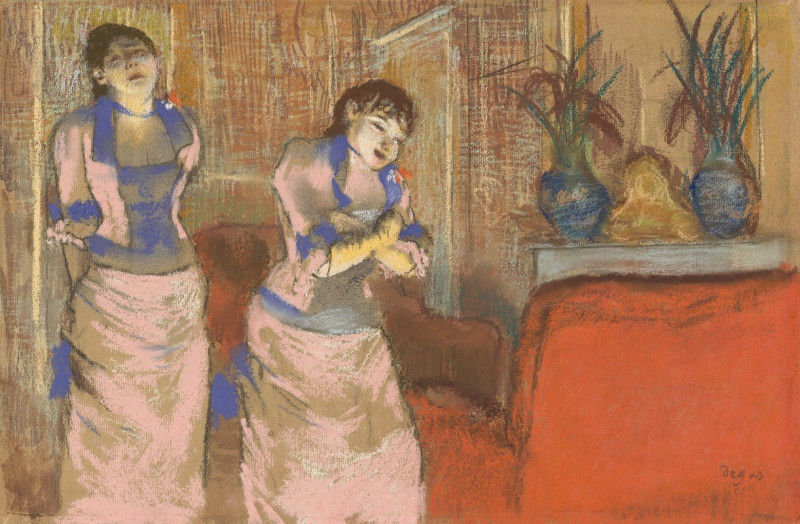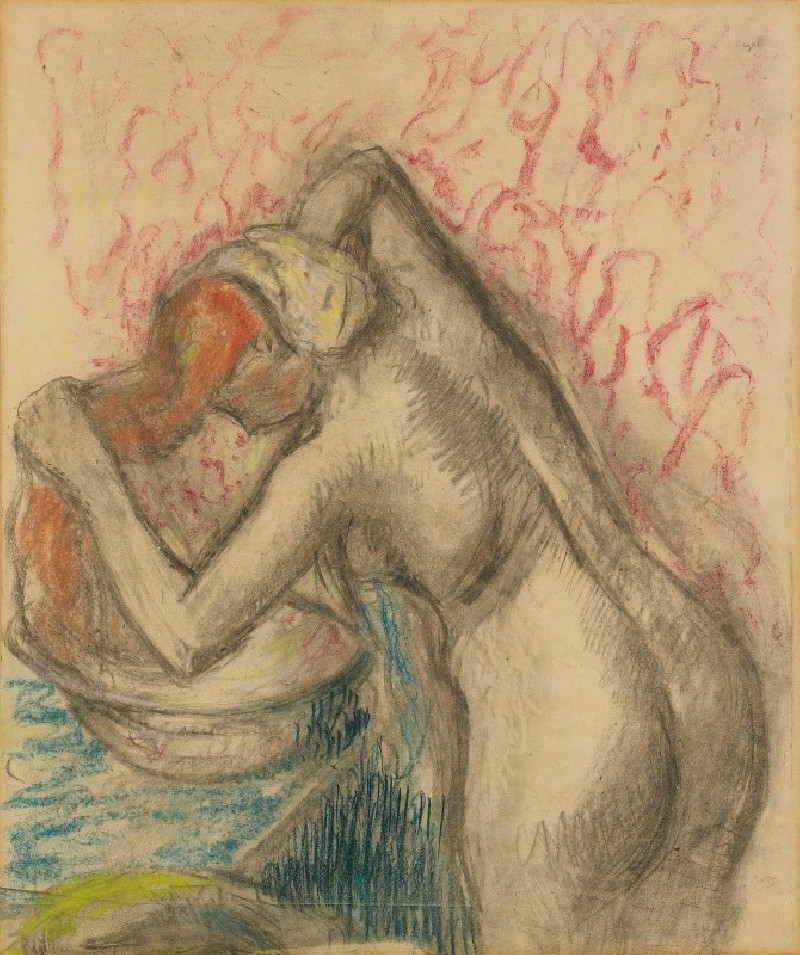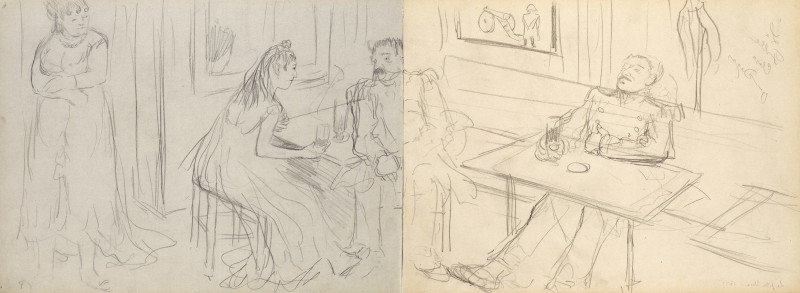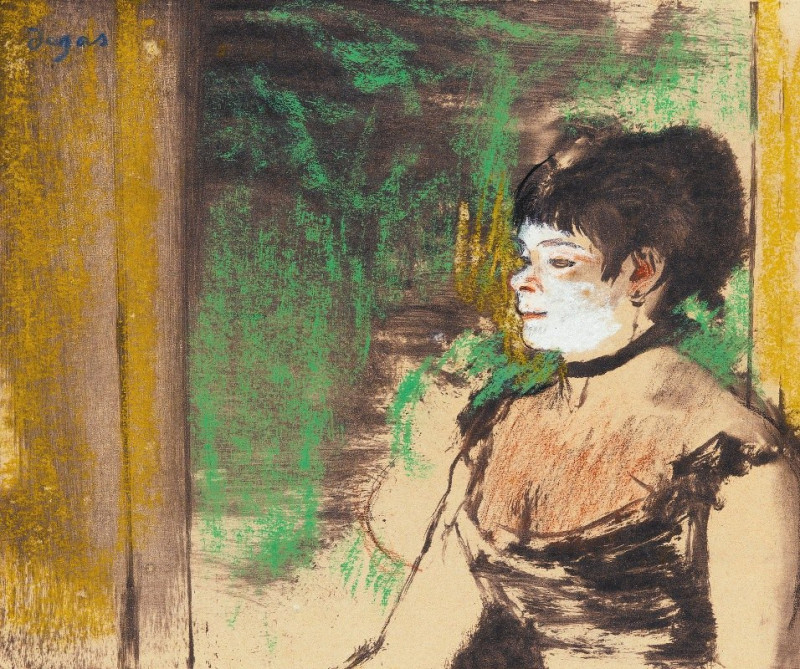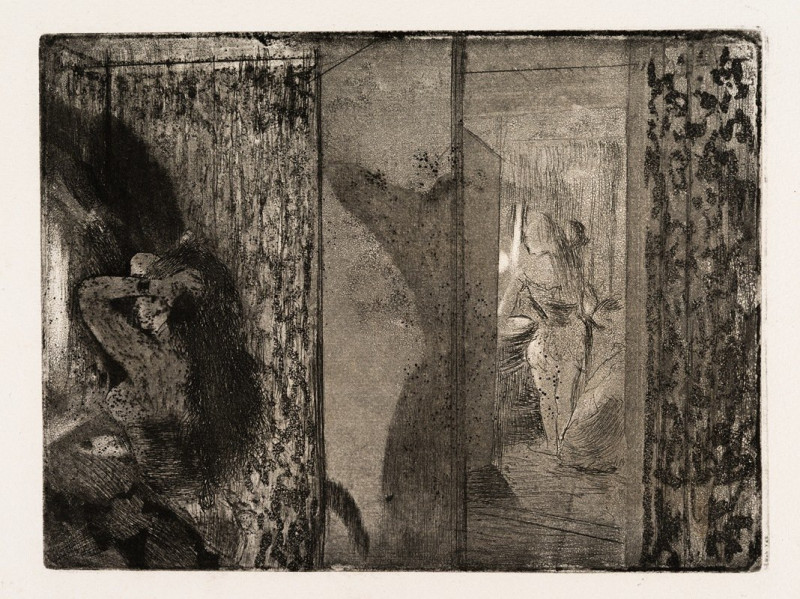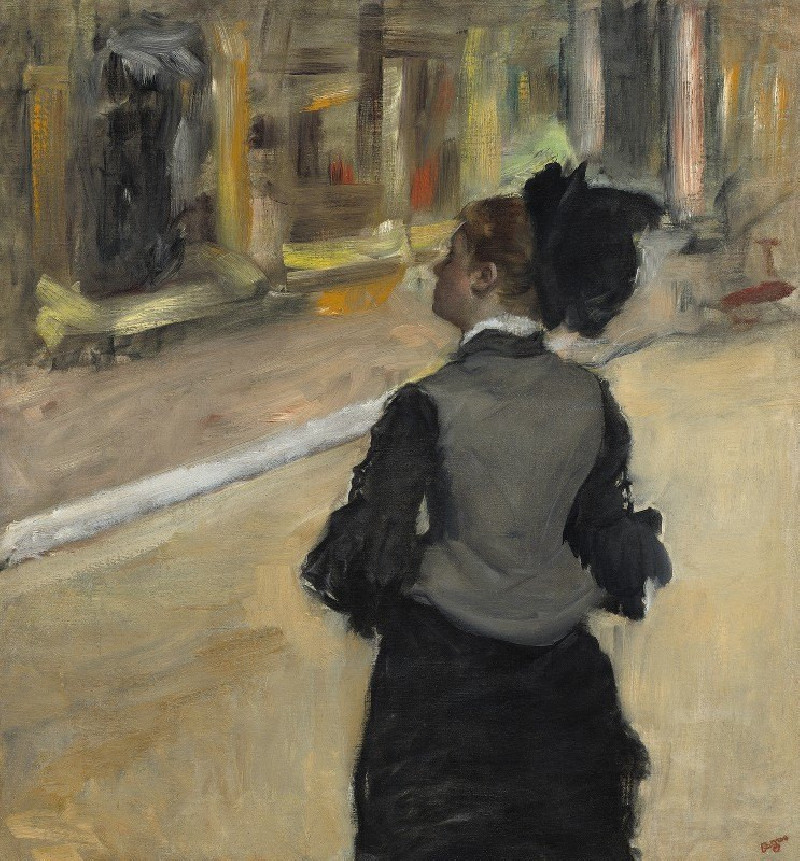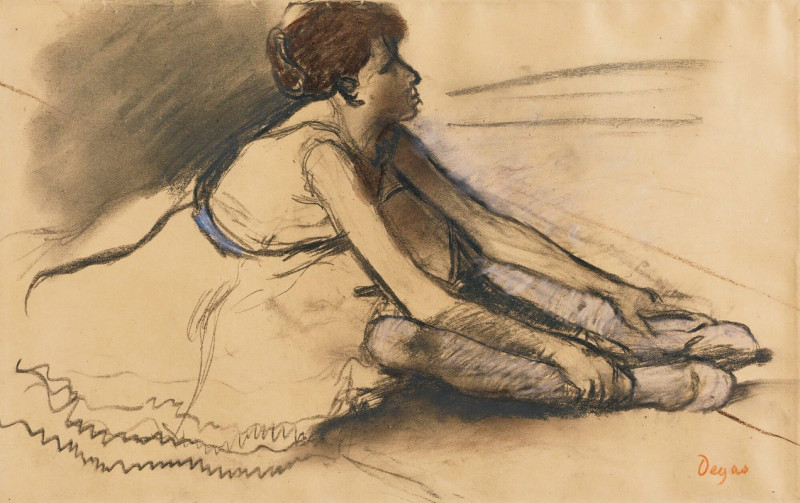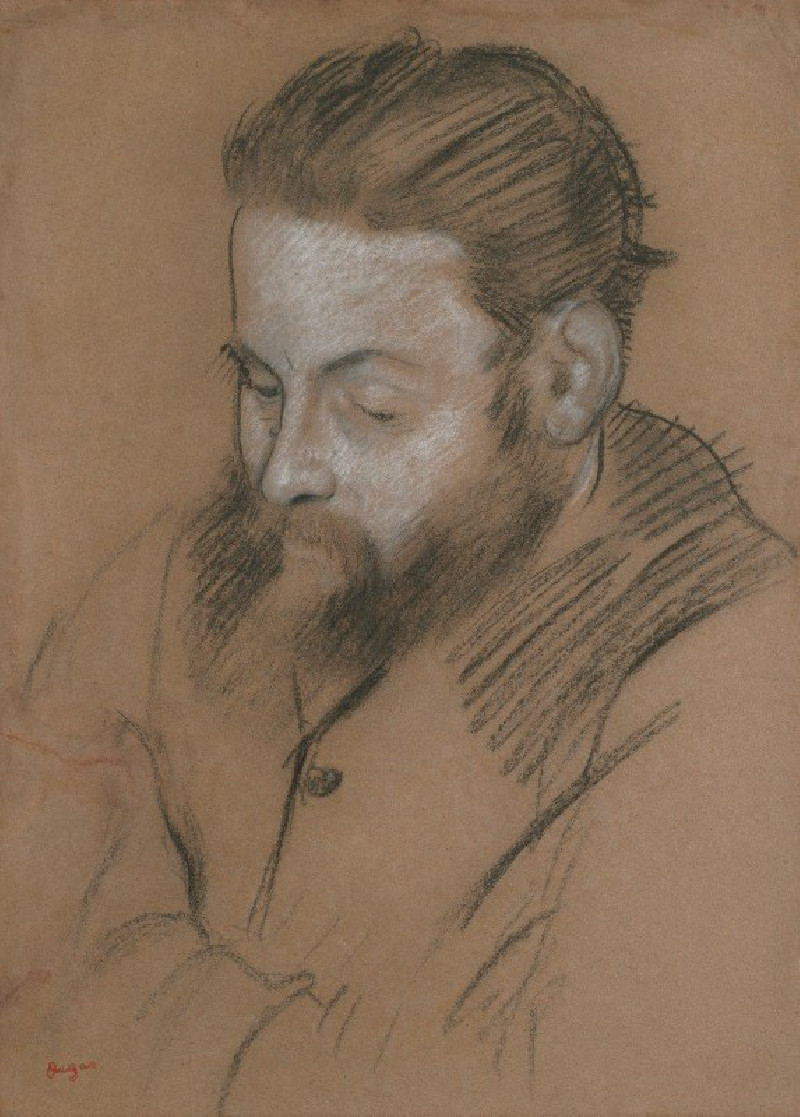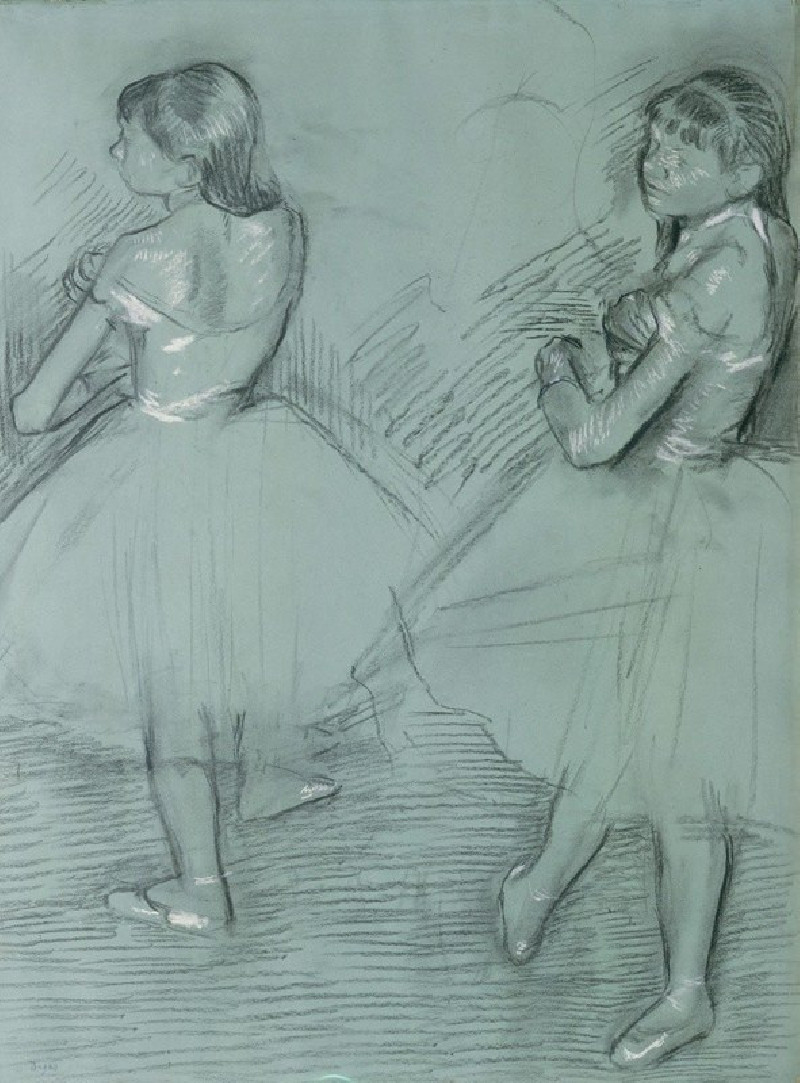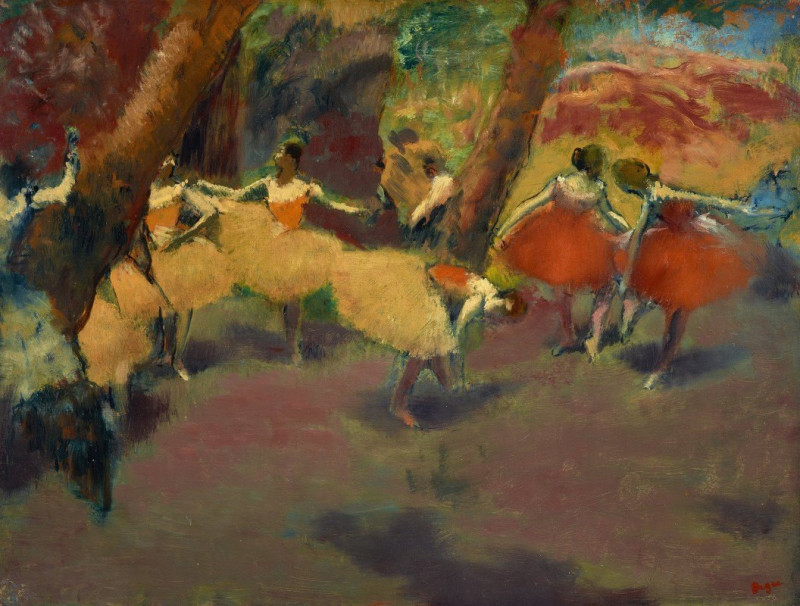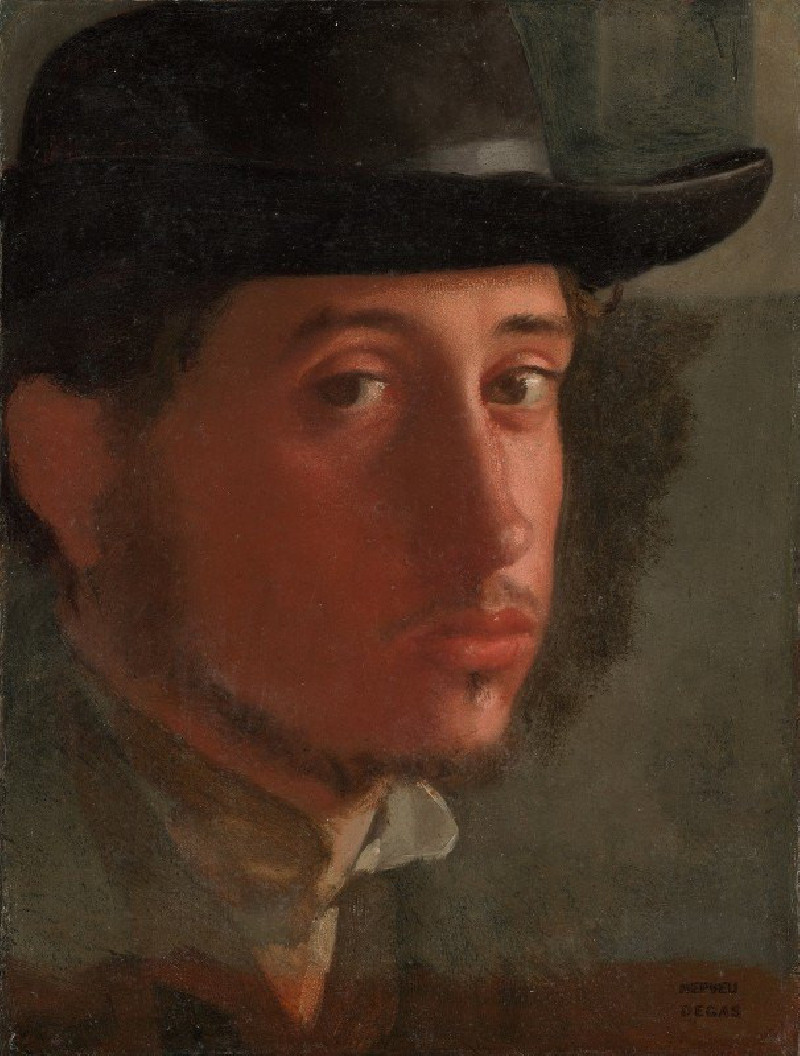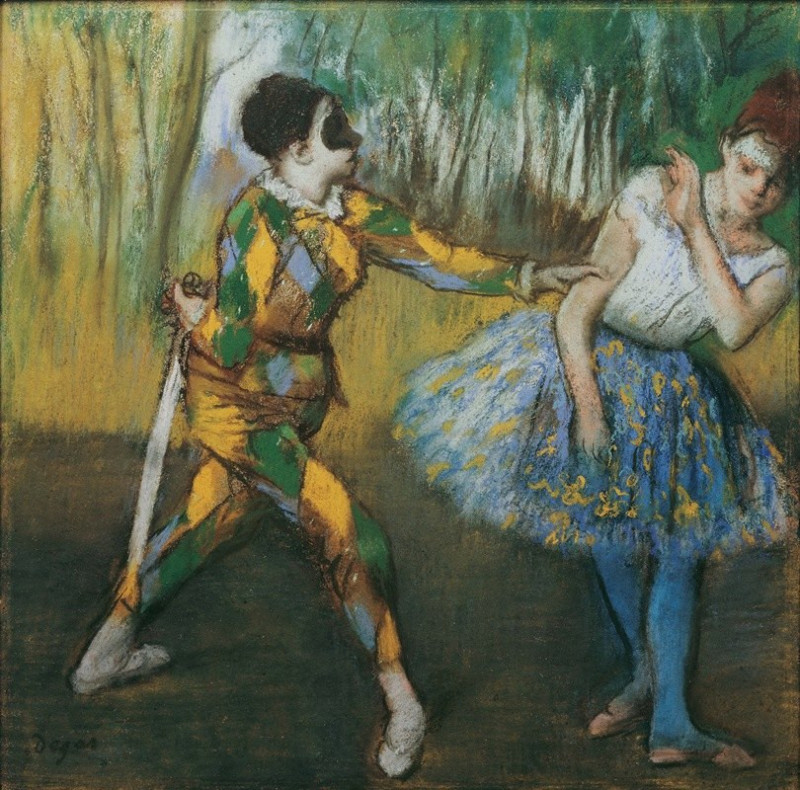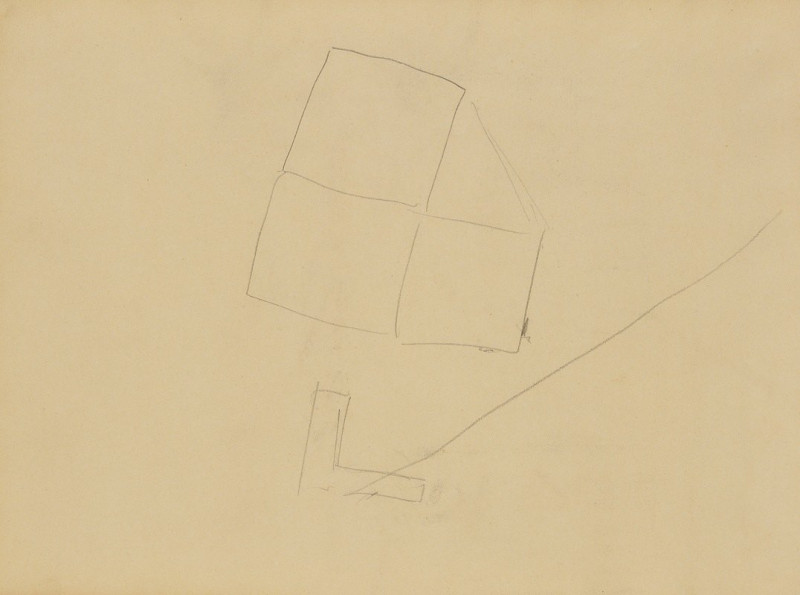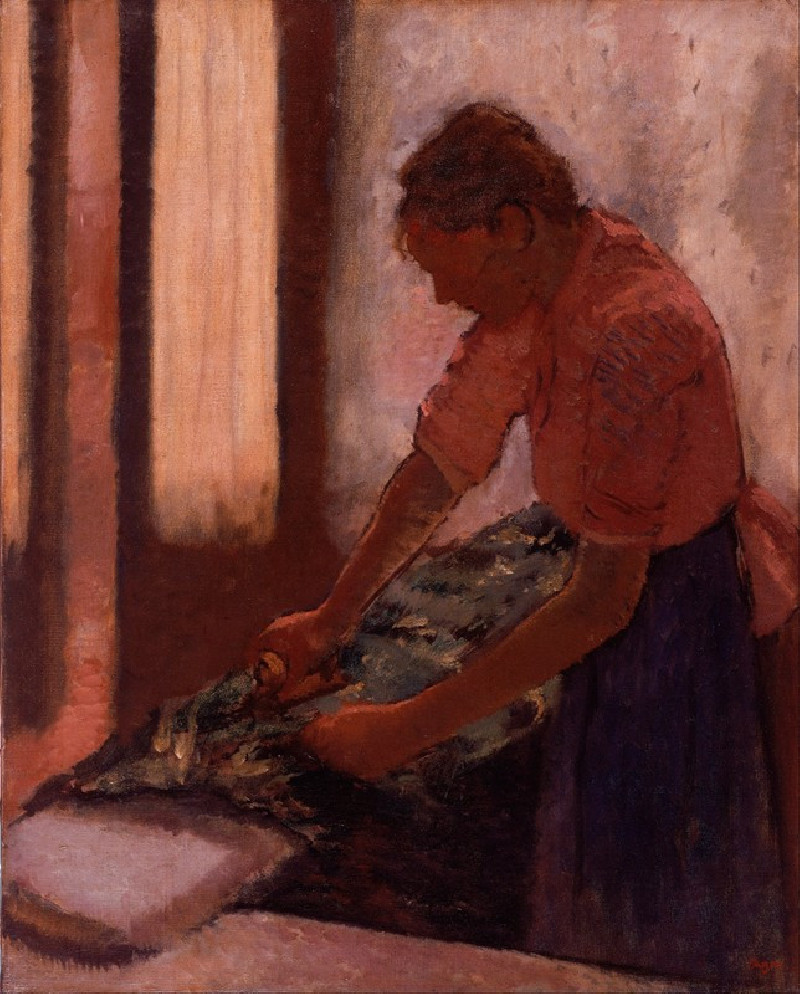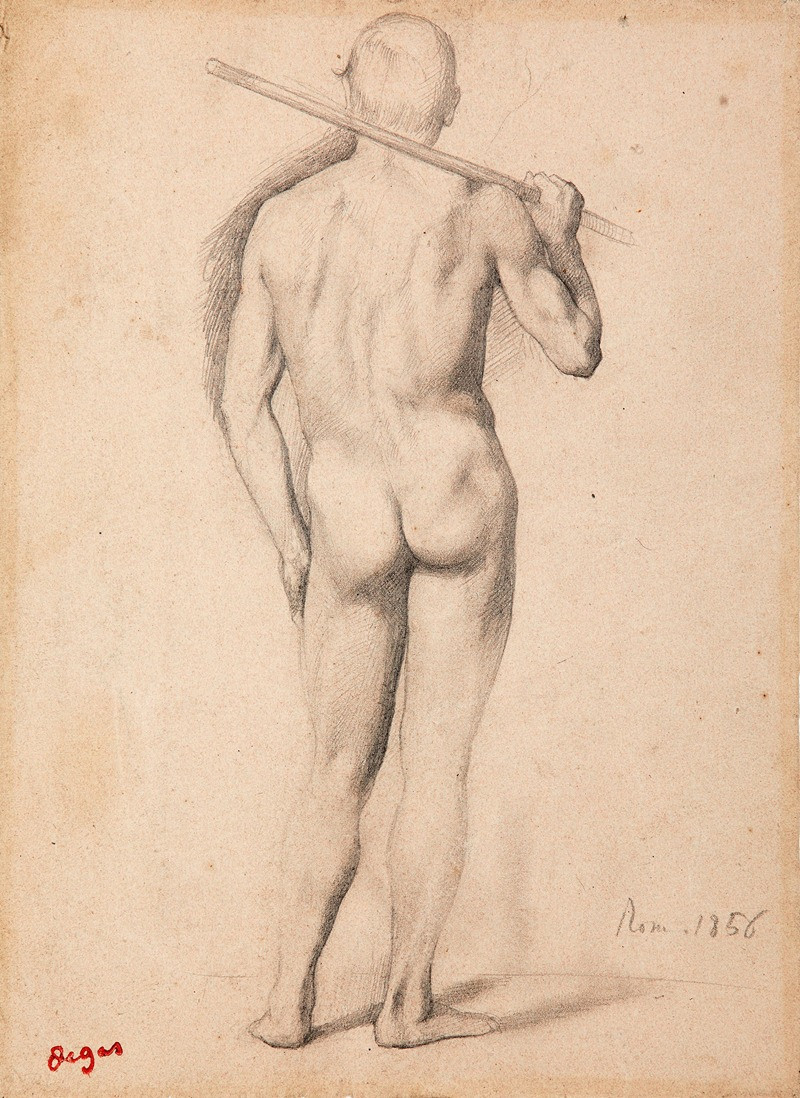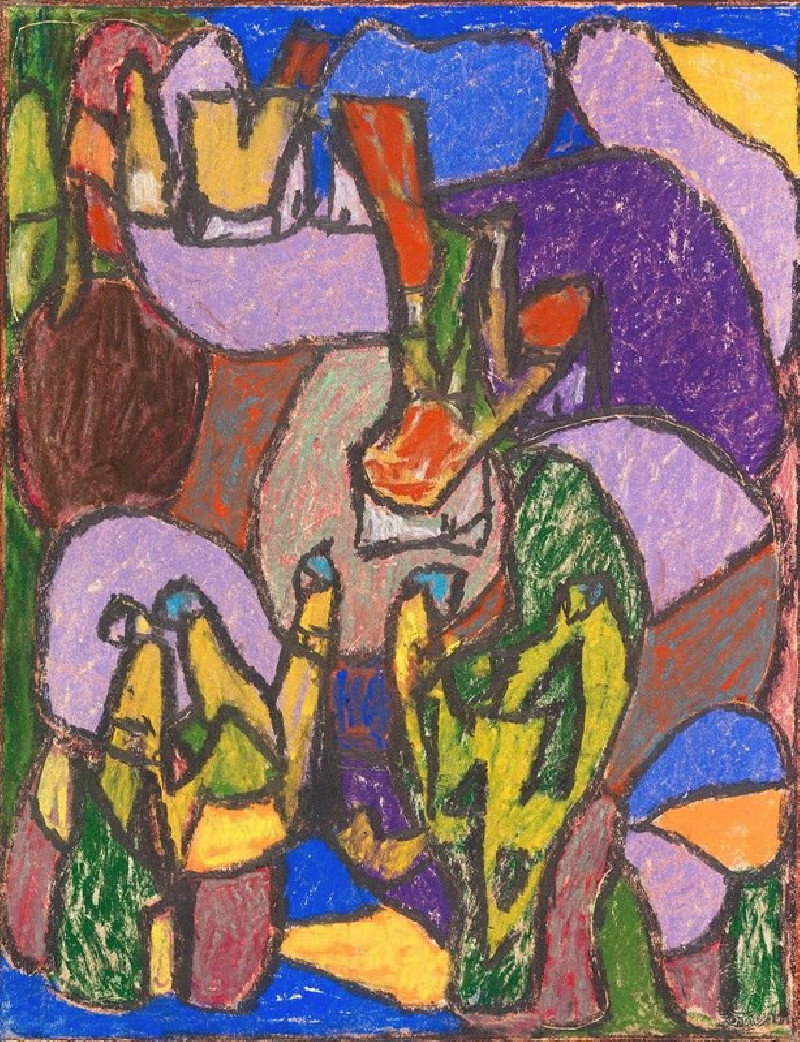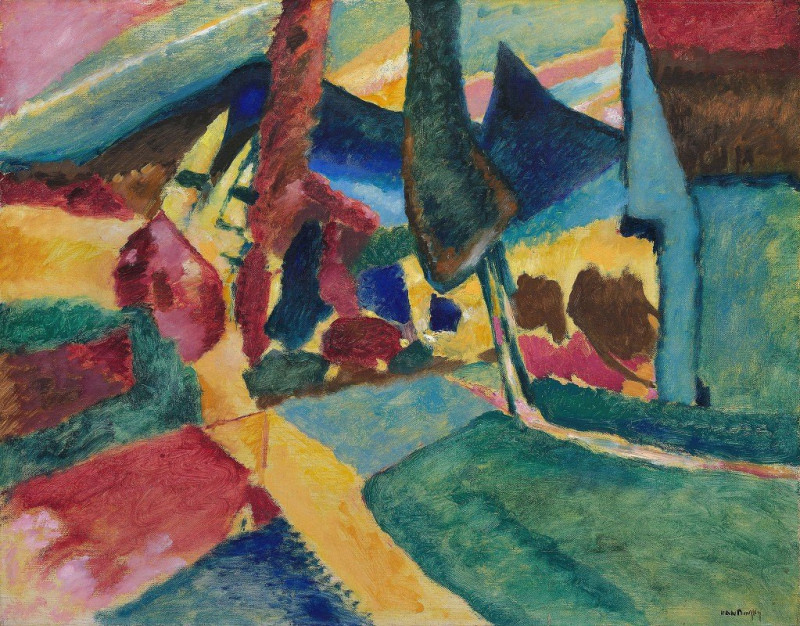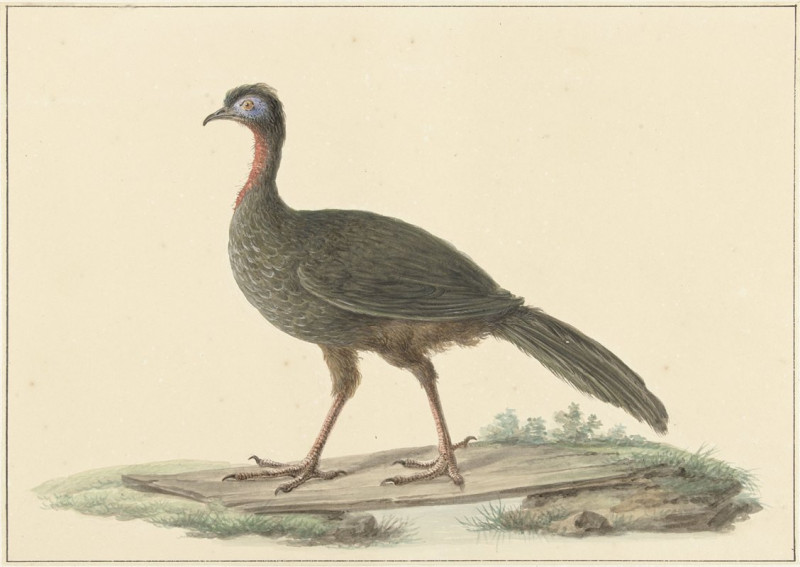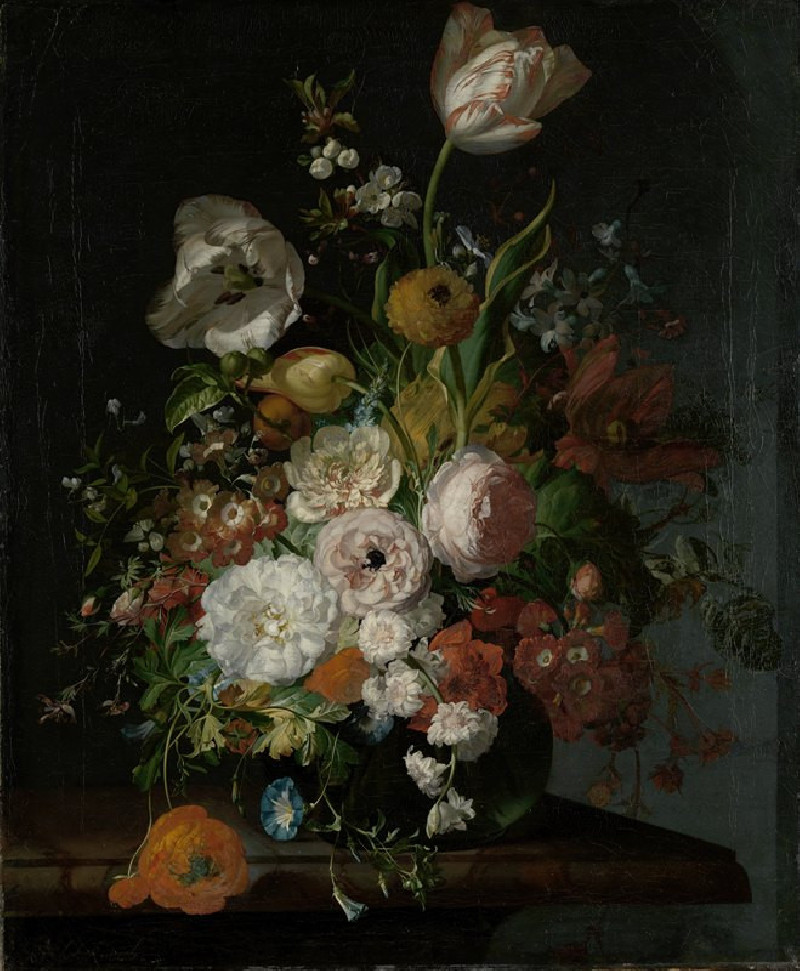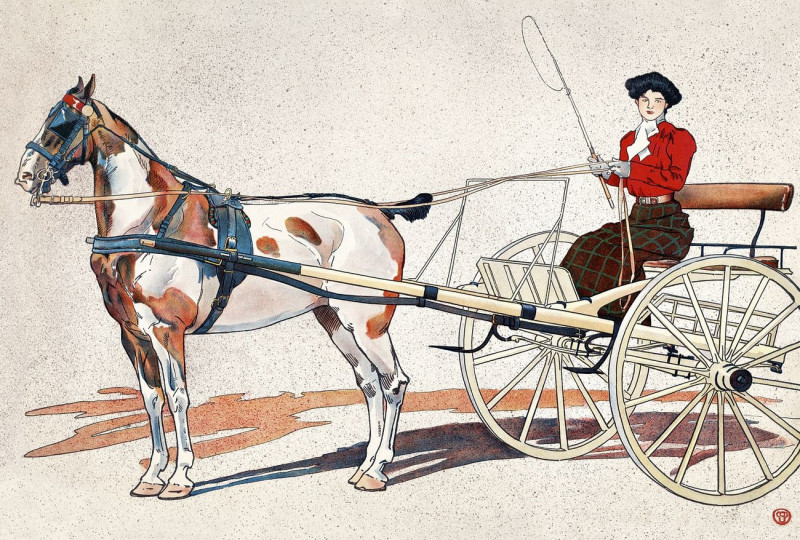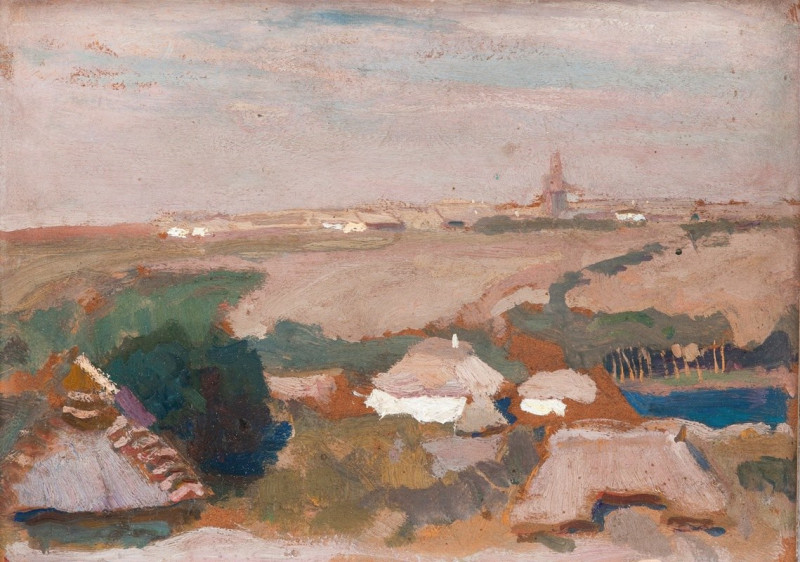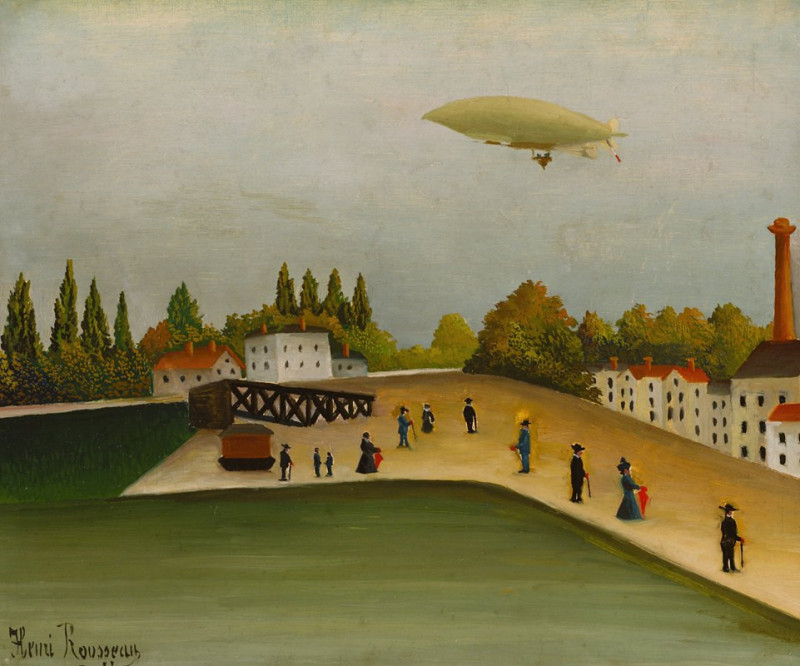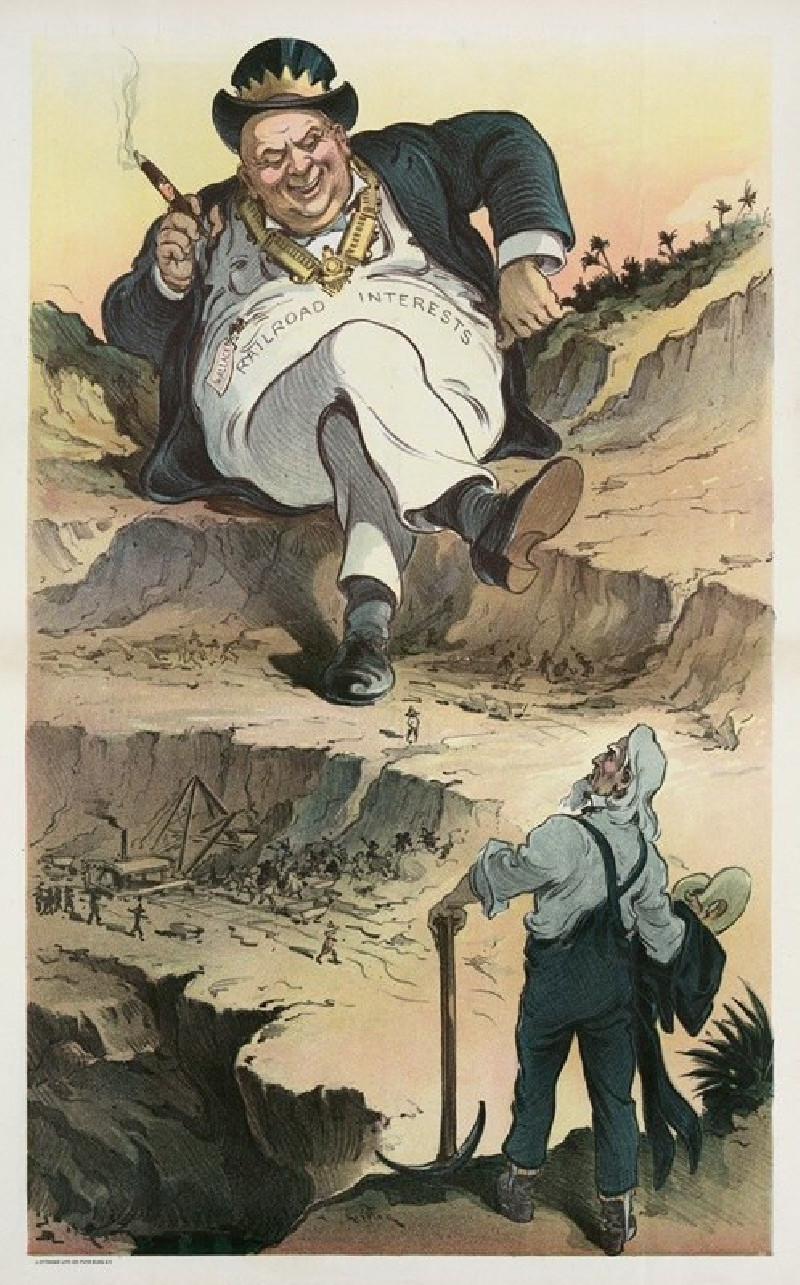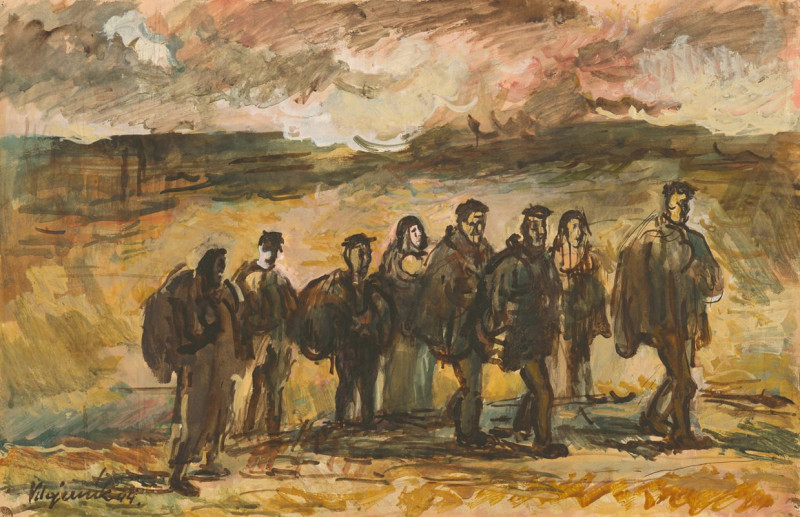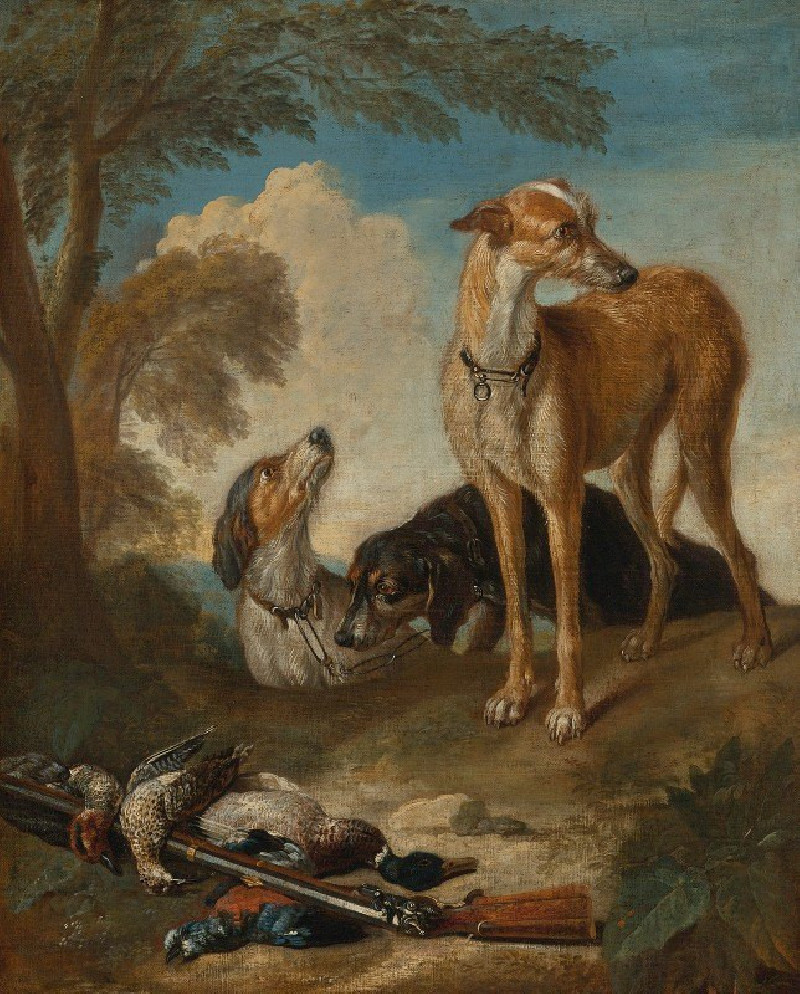Alexander and Bucephalus (1861-1862)
Technique: Giclée quality print
Recommended by our customers
More about this artwork
"Alexander and Bucephalus" is a captivating artwork by Edgar Degas, painted between 1861 and 1862. This painting depicts a significant historical moment from the youth of Alexander the Great, showcasing his bravery and skill as a horseman.The scene is set against a rugged landscape, where a young Alexander confronts the formidable horse, Bucephalus, which all others had failed to tame. Degas captures the pivotal moment when Alexander, demonstrating remarkable courage and insight, turns Bucephalus towards the sun to prevent it from being frightened by its own shadow. The young boy's garb, a simple white tunic, contrasts sharply with the darker and more ornate clothing of the spectators, highlighting his central role in the narrative.To the left, Bucephalus is held by a figure, cautiously managing the horse’s reins. The bystanders, arrayed in richly colored garments, watch intently, their postures and expressions conveying a mix of apprehension and awe. Degas’s use of vibrant colors emphasizes the emotional intensity of the scene and the dramatic landscape in the background further adds to the gravity of the moment.

